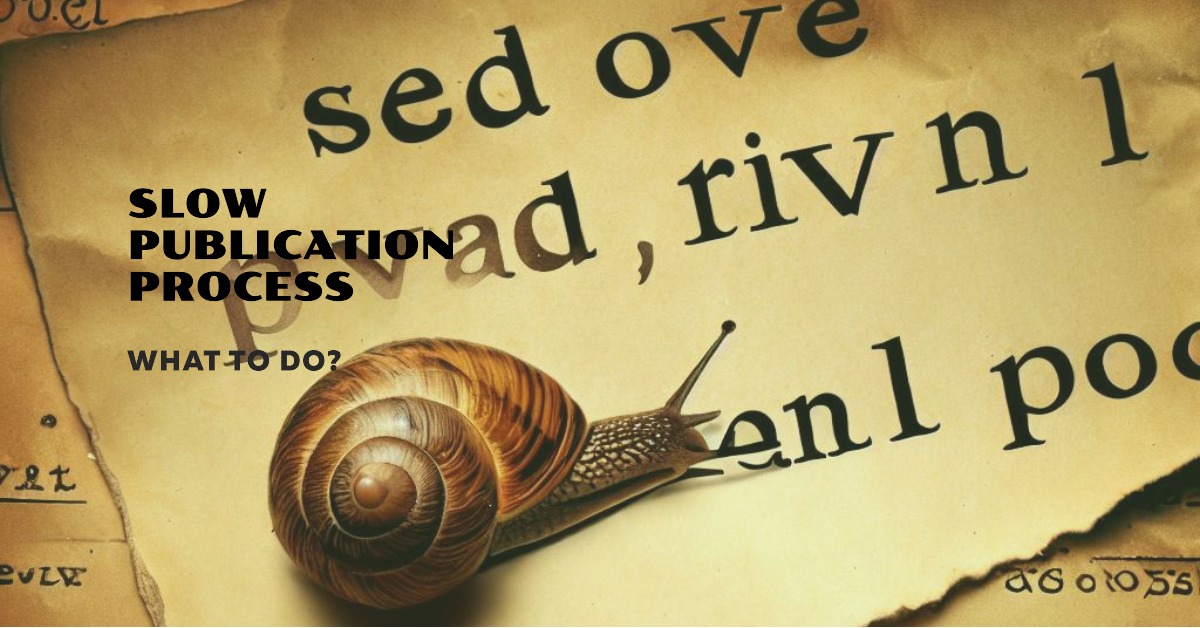As a budding scholar, you need to get your study published in an academic journal. When you start looking for a good or high impact journal, you might see many terms that may not make much sense to you. For example, you may frequently see journals mentioning that they are open-access. But, you might wonder, what is the difference between open access and traditional academic journals?
It is worth understanding that these are two very different academic journal publication approaches, each with its pros and cons.
Open access is a newer approach and is considered better than the traditional approach to scholarly publishing. The open access publication approach has been made possible mainly by the internet. Such an approach to science or art journals publishing would not have been possible in the pre-internet era.
For example, the European Institute of Knowledge and Innovation uses open access publishing model, and it publishes many science and art, high impact journals.
Emergence of Traditional Academic Journals
Traditional Academic Journals have a rich history that dates back several centuries. They have played a pivotal role in disseminating scholarly research, establishing academic reputations, and facilitating intellectual discourse. The inception of these journals can be traced to the establishment of scientific societies and academies during the 17th and 18th centuries.
During this time, scholars and scientists recognized the importance of sharing knowledge and findings within their respective disciplines. The emergence of scientific societies, such as the Royal Society in England and the Académie des Sciences in France, led to the establishment of the first academic journals. These journals served as platforms for researchers to publish their work and communicate with their peers.
However, this traditional platform had one considerable drawback. A handful of universities and publishers controlled the whole publishing business – there was a monopoly in academic publishing.
It meant that these institutions had too much say regarding the reach of knowledge. They were also sometimes hesitant to publish articles from new researchers. In those days, even some people who later went on to get Nobel prizes for their findings had to struggle to publish their studies.
In those days, when traditional academic journals dominated, researchers from developed countries were at a significant disadvantage. They would often need to wait for years and even beg some of the better-known researchers for support.
However, that all changed with the open-access movement.
Development of Open Access Movement
The Open Access movement emerged in response to the rising concerns over restricted access to scholarly knowledge. With the advent of the internet and digital technologies, scholars and activists began advocating for a more inclusive and accessible publishing model. The Budapest Open Access Initiative in 2002 marked a significant milestone in formalizing the principles of Open Access.
The movement aimed to remove barriers that hindered the free flow of scholarly information. It emphasized the importance of making research articles freely available to the public, enabling anyone with an internet connection to access and benefit from scientific knowledge. In addition, open Access advocates argued that the financial constraints or subscription-based models should not limit knowledge.
Open access is about easy access to knowledge and ease of publication. It is a win-win situation for both the researchers looking to get their study published in a scholarly journal and readers looking for high quality information.
On the other hand, just consider the list of the top 100 most impactful journals in the world; many of them are still closed to most people. They often ask for a hefty amount for a subscription or even download a single article.
Impact of Technology on Academic/Scholarly Journals Publishing
The advancements in technology, particularly the internet and digital publishing platforms, have revolutionized the landscape of journal publishing. The availability of online repositories, preprint servers, and digital archives has facilitated the dissemination of research on a global scale, enabling unprecedented accessibility and reach.
Digital technologies have allowed researchers to publish their work online, reaching a broader audience beyond the traditional confines of printed journals. In addition, online platforms have made it easier for researchers to share their findings and collaborate with colleagues worldwide.
Additionally, the internet has enabled the establishment of online communities and forums dedicated to scholarly discussions, further enhancing the exchange of ideas.
Just imagine a situation that prevailed a century ago when it was almost impossible for researchers from emerging economies to get their studies published. Moreover, it was equally impossible for them to get hold of a copy of one of the reputed journals.
However, thanks to the open-access model and technological advances, they can readily get hold of a copy of the most reputed or high impact journals and even get their study published in one of the high impact factor journals.
Open Access: Advantages and Benefits

Increased Accessibility to Knowledge
1. Removal of Paywalls
One of the primary advantages of Open Access is the removal of paywalls, which have traditionally limited access to scholarly research. By making research articles freely available, Open Access eliminates financial barriers, ensuring that anyone with an internet connection can access and benefit from the latest scientific knowledge. This democratization of knowledge promotes inclusivity and allows researchers, students, policymakers, and the general public to engage with scholarly research.
2. Global Outreach and Impact
Open access facilitates global outreach and impact by enabling researchers worldwide to access and contribute to the global body of knowledge. Unlike traditional journals with limited readership due to subscription fees, researchers and institutions worldwide can access Open Access articles. This fosters collaboration, facilitates interdisciplinary research, and promotes the democratization of knowledge on a global scale.
Rapid Dissemination of Research
3. Immediate Availability
Open Access journals offer immediate availability of research articles. Once an article undergoes the necessary editorial processes, it can be published online without delay. This immediate availability ensures that the latest findings are accessible to the scientific community and the public in a timely manner. As a result, researchers can quickly disseminate their work, accelerating the pace of scientific progress.
4. Accelerated Research Progress
The rapid dissemination of research facilitated by Open Access academic journals can contribute to the acceleration of research progress. Researchers can build upon existing knowledge more efficiently when findings are made available to the scientific community without significant delays. This promotes collaboration, reduces duplication of efforts, and encourages the development of new ideas and breakthroughs.
Enhanced Collaboration and Interdisciplinary Research
5. Breaking Down Silos
Open access journal publishing promotes collaboration and breaks down disciplinary silos. By making research articles freely available, researchers from different disciplines can access and engage with research findings outside their specific field. This cross-disciplinary interaction fosters the exchange of ideas, encourages innovative approaches, and stimulates the emergence of interdisciplinary research projects that address complex societal challenges.
6. Facilitating Knowledge Exchange
Open access facilitates knowledge exchange and encourages open dialogue among researchers. Open Access journals create an environment conducive to sharing findings, methodologies, and data by providing unrestricted access to research articles. This knowledge exchange promotes transparency, encourages constructive critique, and allows for the replication and validation of research, strengthening the overall scientific endeavor.
Open Access: Challenges and Limitations

Funding and Sustainability
1. Article Processing Charges (APCs)
Open Access journals often rely on Article Processing Charges (APCs) to cover the costs associated with the publication process. These charges are typically borne by the researchers or their institutions. However, the requirement of APCs can pose financial challenges, particularly for researchers from underfunded institutions or those working in resource-constrained regions. As a result, finding sustainable funding models that ensure equitable access to Open Access publications remains a significant challenge.
Nonetheless, this is not a significant challenge as the APC of most open access academic journals is relatively low. In fact, many traditional journals are now charging much higher publication fees. In addition, they are also demanding a fee from both the authors and readers.
2. Business Models and Economic Viability
Open Access journals face challenges in developing sustainable business models. While some journals operate on a non-profit basis or receive funding from institutions or grants, others rely on alternative revenue streams such as sponsorships or institutional support. Developing economically viable models that ensure the continued operation and quality control of Open Access journals is crucial for their long-term sustainability.
Quality Control and Peer Review
3. Concerns about Rigor and Standards
Critics of Open Access raise concerns about the rigor and quality standards of research published in Open Access journals. The absence of subscription-based models and the lack of financial barriers to publication can lead to an influx of articles that may not undergo rigorous peer review. Ensuring the credibility and reliability of published research is essential for maintaining the integrity of scientific knowledge.
Although it is also worth noticing that this concern is not solely limited to open access. Some traditional academic journals also suffer from these issues. Nonetheless, this problem is more acute in open access publishing.
4. Maintaining Editorial Integrity
Open Access journals must maintain editorial integrity and uphold ethical publishing practices. Editors and reviewers play a critical role in ensuring the quality and validity of published research. Therefore, it is essential to establish robust peer review processes, implement transparent editorial policies, and minimize conflicts of interest to maintain the trust of the academic community and readership.
Copyright and Licensing Issues
5. Creative Commons and Legal Considerations
Open Access journals often employ Creative Commons licenses, which allow authors to retain copyright while granting others the right to use and distribute their work. However, determining the appropriate Creative Commons license and navigating the legal considerations associated with a copyright can be complex. Striking a balance between open sharing of research and protecting authors’ rights requires careful attention to copyright laws and intellectual property considerations.
6. Intellectual Property Rights
Authors may have concerns about the potential impact on their intellectual property rights when publishing in Open Access journals. It is important to address these concerns and ensure that authors’ rights are respected. Balancing open access and the protection of the author’s intellectual property rights can be achieved through appropriate licensing agreements and clear communication between authors and publishers.
Again, these problems are not limited to open access publishing. Publication terms of some of the reputed and high impact journals, often using traditional publishing methods, may be quite stringent and one-sided, with authors having little choice but to accept those terms.
Traditional Academic Journals: Advantages and Benefits

Established Reputation and Prestige
1. Journal Rankings and Impact Factors
Traditional Academic Journals often have well-established rankings and impact factors, which serve as indicators of their influence and significance within a particular field. As a result, researchers often consider publishing in reputable journals to enhance their academic reputation and gain recognition within their respective disciplines.
2. Role in Career Advancement
Publishing in traditional journals can significantly impact researchers’ career advancement. Academic institutions and funding agencies often prioritize publications in established journals when evaluating researchers for promotions, grants, and tenure. In addition, the reputation and prestige associated with traditional journals can play a crucial role in career progression.
Rigorous Peer Review Process
3. Ensuring Quality and Validity
Traditional Academic Journals employ rigorous peer review processes to ensure the quality and validity of published research. Expert reviewers evaluate manuscripts for scientific soundness, methodology, significance, and originality. The peer review process acts as a gatekeeper, upholding academic standards and contributing to the integrity of scholarly knowledge.
4. Expert Evaluation and Feedback
Traditional journals provide researchers with valuable feedback and critical evaluation from experts in their respective fields. The peer review process offers constructive comments and suggestions for improving the research, strengthening the methodology, and enhancing the overall quality of the manuscript. This expert evaluation can significantly contribute to the refinement and advancement of research.
Long-Term Preservation and Archiving
5. Role of Libraries and Archives
Traditional Academic Journals often collaborate with libraries and archives to ensure the long-term preservation and archiving of scholarly literature. Libraries play a crucial role in storing and providing access to print and digital journal collections, ensuring that research remains available for future generations. In addition, archiving guarantees the preservation of scientific knowledge and its historical significance.
However, it is worth noticing that most high quality and ethically published open access jouornals also provide archiving guarantees nowadays. It means that even if the publisher goes out of business for some reason, the researcher’s article will still be accessible via archives. In this case, DOI will just start pointing to the archive copy of the journal. For example, the European Institute of Knowledge and Innovation has strict archiving policies, with every issue archived within a month of its publication.
6. Historical Significance and Legacy
Traditional journals have a historical significance and legacy within the academic community. Journals that have been published for decades or even centuries have documented the evolution of research within specific disciplines. Researchers often consult older publications to understand the historical context, trace the development of theories, and gain insights from previous scientific discoveries.
Traditional Academic Journals: Challenges and Limitations
Restricted Access and Paywalls
1. Exclusivity and Limited Readership
Traditional Academic Journals often restrict access to their content through subscription-based models or paywalls. This exclusivity can limit the readership of research articles, as individuals or institutions without subscription access may face barriers to accessing valuable scientific knowledge. In addition, this restricted access hinders the dissemination of research to a wider audience.
2. Inequitable Distribution of Knowledge
Subscription-based models can create disparities in access to research, particularly for researchers in low-income countries or those without access to institutional subscriptions. This inequitable distribution of knowledge perpetuates a global knowledge divide and restricts the participation of researchers from marginalized communities. Moreover, the lack of access to research may hinder scientific progress and limit the diversity of perspectives within academia.

Slow Publication Process
3. Time-consuming Peer Review
Traditional journals often follow a lengthy peer review process, which can significantly delay the publication of research. The time taken for reviewers to evaluate the manuscript, provide feedback, and for authors to revise their work can result in considerable publication timelines. This delay can impact the timely dissemination of research findings, particularly in rapidly evolving fields.
4. Delayed Availability of Research
The prolonged publication process of traditional journals can result in delayed availability of research. While researchers await publication, their findings may become outdated or redundant, limiting their impact. This delay may hinder the rapid progression of scientific knowledge and impede the timely utilization of research in real-world applications.
Lack of Transparency and Accountability
5. Editorial Bias and Gatekeeping
Critics argue that traditional journals may exhibit editorial bias, favoring research that aligns with specific ideologies or dominant paradigms within a discipline. This potential bias can limit the diversity of ideas and perspectives, hindering the progress of scientific knowledge. In addition, the gatekeeping role of traditional journals raises concerns about the potential exclusion of unconventional or controversial research.
6. Conflicts of Interest
Traditional journals may face conflicts of interest due to their reliance on subscriptions and advertising revenue. The financial interests of publishers can sometimes influence editorial decisions or publication priorities, raising concerns about the independence and objectivity of research dissemination. Maintaining transparency, editorial autonomy, and ethical publishing practices are essential for addressing these challenges.
Open Access vs. Traditional Academic Journals: A Comparative Analysis
Accessibility and Reach
1. Open Access Advantages
Open Access journals excel in providing unrestricted access to research articles, ensuring global accessibility and inclusivity. The removal of paywalls and subscription barriers enables researchers, students, policymakers, and the general public from all over the world to engage with scholarly research.
2. Traditional Journals Advantages
Traditional Academic Journals may have a reputation for selectivity and quality due to their rigorous peer review processes and established rankings. The prestige associated with these journals can influence researchers’ career advancements and grant funding opportunities.

Speed and Efficiency
3. Open Access Advantages
Open Access journals offer rapid publication and immediate availability of research findings. This accelerated dissemination allows researchers to share their work promptly, facilitating collaborations and promoting swift progress in scientific knowledge.
4. Traditional Journals Advantages
Despite their slower publication process, Traditional Academic Journals maintain a comprehensive peer review system that ensures the quality and validity of published research. The rigorous evaluation by experts contributes to the reliability and credibility of the research published in these journals.
Quality and Peer Review
5. Open Access Advantages
Open Access journals strive to maintain high-quality standards through transparent peer review processes. Some Open Access journals adopt innovative peer review models, such as post-publication peer review, to enhance transparency and engagement within the academic community.
6. Traditional Journals Advantages
Traditional Academic Journals have established reputations for rigorous peer review, ensuring the integrity and validity of published research. The expertise and critical evaluation provided by peer reviewers contribute to the quality and credibility of the research.
Economic Considerations
7. Open Access Advantages
Open Access journals promote a more inclusive publishing model by removing financial barriers for readers. As a result, researchers can freely access research articles without subscription fees, allowing for broader dissemination and global engagement with knowledge.
8. Traditional Journals Advantages
Traditional Academic Journals, through their subscription-based models, generate revenue that supports the publication process, editorial operations, and infrastructure necessary for maintaining high-quality standards. This financial stability contributes to the sustainability and continuity of these journals.
However, since these journals are behind the subscription wall or charge hefty amounts for providing access to articles, much research published in these journals remains inaccessible to the wider audience. This is especially an issue for developing nations.
Conclusion
In conclusion, Open Access and Traditional Academic Journals present distinct approaches to scholarly publishing, each with its own set of pros and cons. Open Access journals provide increased accessibility, rapid dissemination, and enhanced collaboration but face funding, quality control, and copyright challenges. On the other hand, traditional Academic Journals offer established reputations, rigorous peer review, and long-term preservation but struggle with restricted access, slow publication processes, and concerns about transparency.
A comprehensive understanding of the advantages and limitations of both models allows researchers, academics, and readers to make informed decisions about publishing, accessing, and utilizing scholarly research. By considering the comparative analysis and recognizing the potential solutions to the challenges faced by each model, we can work towards a future that combines the strengths of both Open Access and Traditional Academic Journals, ensuring broad dissemination and high-quality standards of scholarly knowledge.
If you are looking for your research to be readily available for a broader audience, shared and cited, then choose open access journals published by the European Institute of Knowledge and Innovation.




